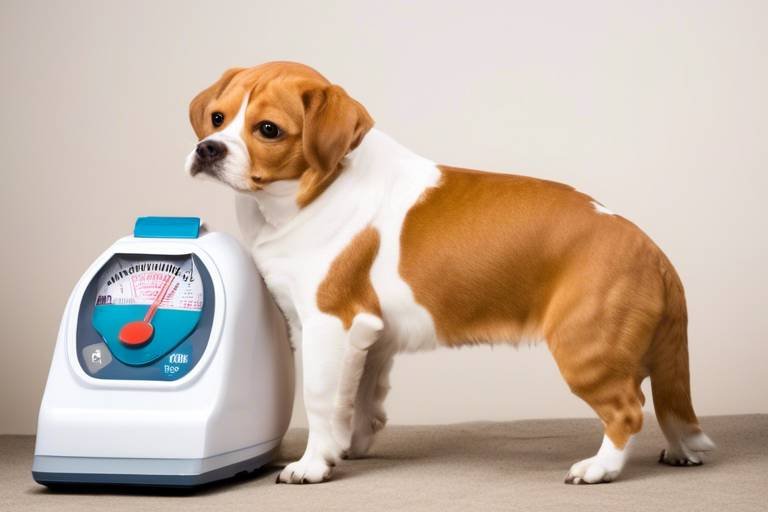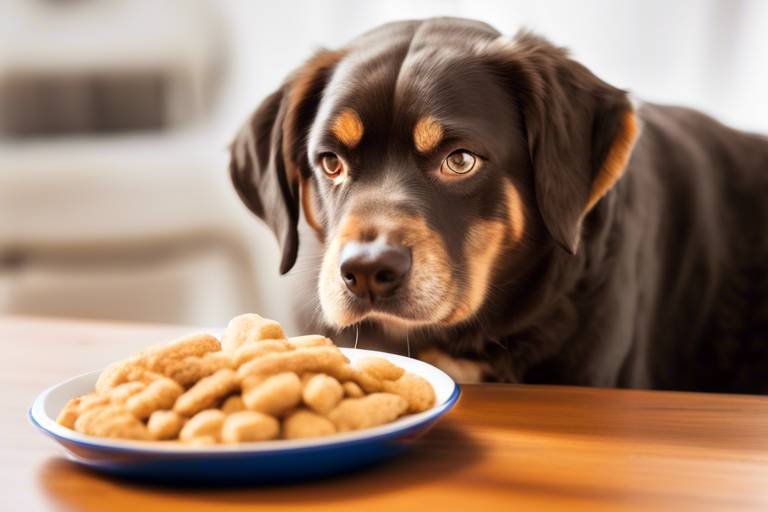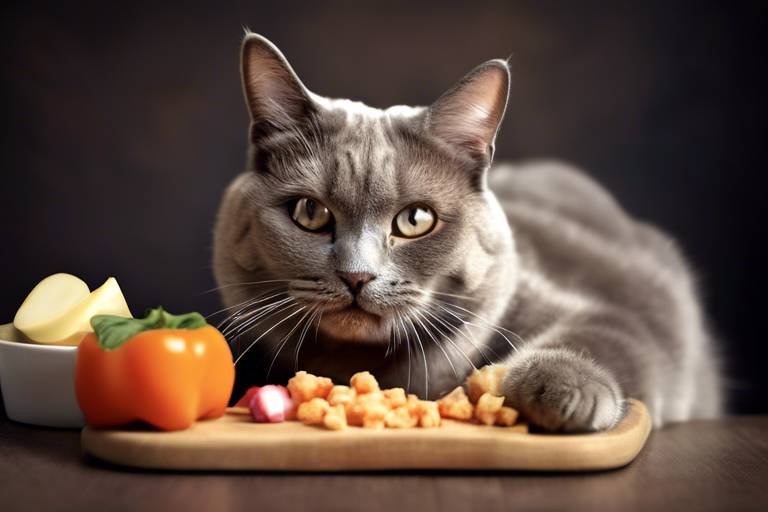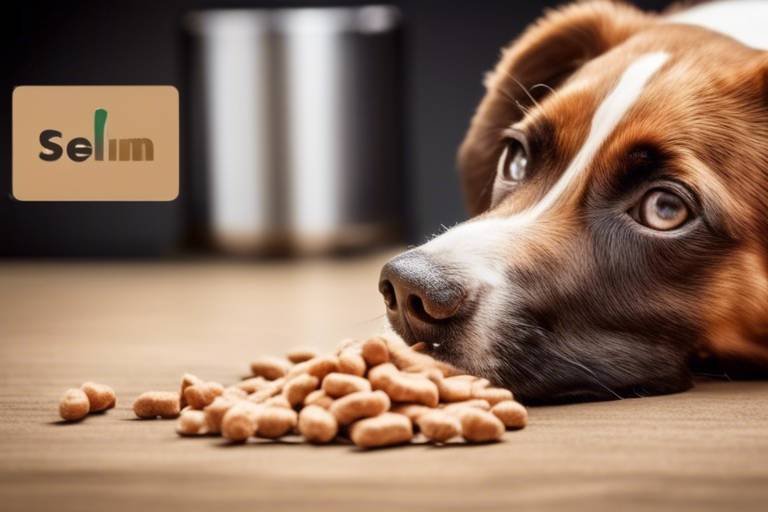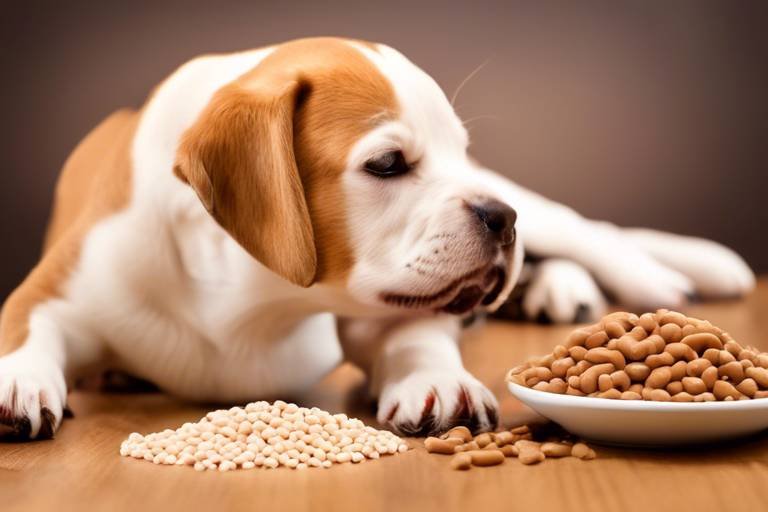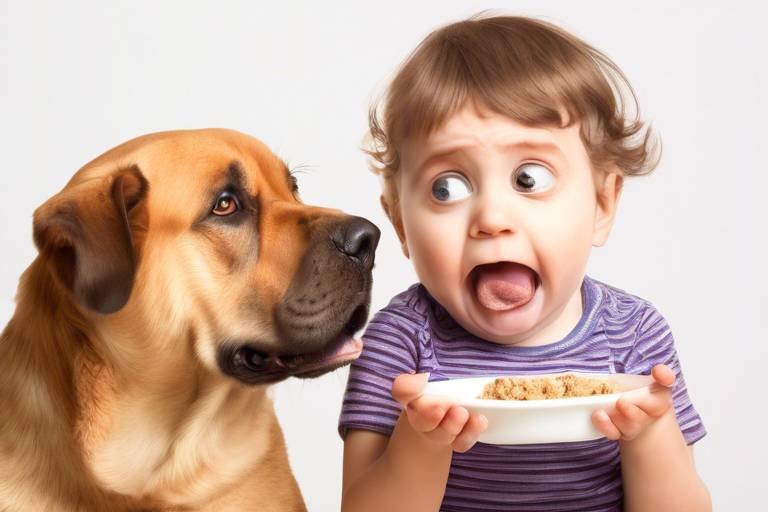How to Monitor Your Pet's Weight and Diet
Keeping a close eye on your furry friend's weight and diet is not just a good idea; it's essential for their overall health and happiness. Just like humans, pets can face serious health issues if they are overweight or underweight. Imagine your pet as a little athlete; they need the right fuel to perform their best. Monitoring their weight and dietary habits can feel overwhelming, but it doesn't have to be! In this guide, we will explore effective methods to track your pet's weight and diet, ensuring they stay healthy and vibrant.
Before diving into weight monitoring, it's crucial to understand the basics of pet nutrition. Just like us, pets require a balanced diet filled with essential nutrients to thrive. These nutrients include proteins, fats, carbohydrates, vitamins, and minerals. Each pet has specific dietary requirements based on their breed, age, and activity level. Reading pet food labels can be your best friend in this journey. Look for high-quality ingredients and avoid fillers that offer little nutritional value. Think of it like shopping for groceries; the better the ingredients, the healthier your pet will be!
Determining your pet's ideal weight range is a bit like finding the perfect pair of shoes; it varies for each individual. Factors such as breed, age, and activity level play a significant role in what is considered a healthy weight. For example, a Chihuahua's ideal weight will differ vastly from that of a Great Dane. To help you understand this better, consider the following:
- Breed: Different breeds have different weight standards.
- Age: Puppies and kittens will have different weight goals than adult pets.
- Activity Level: More active pets may require a higher caloric intake.
Understanding these factors is vital to maintaining your pet's optimal health.
One effective tool for assessing your pet's weight is the Body Condition Score (BCS). This scoring system evaluates your pet's body shape and fat distribution. By assigning a score from 1 to 9, where 1 is extremely underweight and 9 is extremely overweight, you can get a clearer picture of your pet's condition. Regularly checking your pet's BCS can help you identify any weight issues before they become serious problems.
Visual assessments are another handy method for gauging your pet's body shape. Look at your pet from above; you should see a noticeable waist. When viewed from the side, you should be able to feel their ribs without excessive pressure. This visual reference can serve as a quick way to monitor any changes in weight. If your pet's shape resembles a potato, it might be time for a diet rethink!
Weight charts can be incredibly useful for tracking your pet's weight over time. These charts provide a visual representation of your pet's weight history, allowing you to spot trends and make informed decisions about their diet. Make sure to record your pet's weight regularly, perhaps during vet visits or monthly weigh-ins at home. Consistency is key!
Creating a feeding schedule is crucial for managing your pet's diet. Establishing a routine helps promote healthy eating habits and prevents overeating. Think of it as setting a daily appointment for your pet's meals. Aim for two to three meals a day, depending on your pet's age and needs. This structure not only keeps your pet's metabolism steady but also helps you monitor their food intake more effectively.
Regularly monitoring your pet's weight is essential for early detection of health issues. A sudden weight gain or loss can be a sign of underlying problems. To keep track of weight changes effectively, consider using a journal or a digital app. This will help you note any fluctuations and discuss them with your veterinarian if necessary.
Weighing your pet at home can be straightforward and convenient. You can use a regular bathroom scale for smaller pets. Simply weigh yourself first, then weigh yourself while holding your pet, and subtract the two numbers. For larger pets, you might need a pet-specific scale. Regular home weigh-ins will help you stay on top of your pet's weight without the stress of frequent vet visits.
Recognizing when to seek veterinary advice regarding your pet's weight is crucial. If you notice any of the following warning signs, it's time to schedule a visit:
- Sudden weight gain or loss
- Changes in appetite
- Behavioral changes, such as lethargy or increased aggression
Your vet can provide tailored advice and help identify any underlying health concerns that may be affecting your pet's weight.
Understanding when and how to adjust your pet's diet is vital for maintaining a healthy weight. If you find that your pet is gaining or losing weight unexpectedly, it might be time to reassess their food intake. Gradually making dietary changes, such as switching to a different formula or adjusting portion sizes, can help. Always consult with your veterinarian before making significant changes to ensure that your pet's nutritional needs are still being met.
Q: How often should I weigh my pet?
A: It's recommended to weigh your pet at least once a month, but more frequent weigh-ins can help you catch any sudden changes early.
Q: Can I feed my pet human food?
A: Some human foods are safe for pets, but many can be harmful. Always check with your veterinarian before introducing new foods.
Q: What should I do if my pet is overweight?
A: Consult your veterinarian to create a tailored weight loss plan, which may include dietary changes and increased exercise.

Understanding Pet Nutrition
When it comes to our beloved furry friends, understanding pet nutrition is absolutely essential for their overall health and happiness. Just like humans, pets require a balanced diet that provides them with the necessary nutrients to thrive. But how do we know what they need? Let’s dive into the basics of pet nutrition and uncover the secrets behind those colorful bags of pet food.
First off, every pet has unique dietary requirements based on their age, breed, and activity level. Puppies and kittens, for instance, need more calories and nutrients than adult pets because they are still growing. On the other hand, senior pets may require a diet lower in calories but higher in fiber to support their changing metabolism. So, it’s crucial to choose a diet that matches your pet's life stage.
Now, let’s talk about the essential nutrients that should be included in your pet’s diet. A well-rounded pet food should contain:
- Proteins: Vital for growth and repair of tissues.
- Fats: A concentrated source of energy and essential fatty acids.
- Carbohydrates: Helps provide energy and supports digestive health.
- Vitamins and Minerals: Necessary for various bodily functions and overall health.
But how do you choose the right food? This is where reading pet food labels comes into play. The ingredients list can tell you a lot about the quality of the food. Look for high-quality protein sources listed as the first ingredient, and be wary of vague terms like "meat by-products." A good rule of thumb is to avoid foods that list fillers like corn and soy as primary ingredients.
Here’s a simple table to help you understand what to look for in pet food:
| Ingredient | What to Look For | Avoid |
|---|---|---|
| Protein | Named meat sources (e.g., chicken, beef) | Meat by-products |
| Fats | Named fats (e.g., chicken fat) | Animal fat |
| Carbohydrates | Whole grains (e.g., brown rice) | Fillers (e.g., corn, soy) |
| Vitamins/Minerals | Specific vitamins and minerals listed | Vague terms like "vitamin mix" |
In addition to understanding ingredients, it’s also important to consider any specific dietary needs your pet might have. Some pets may have allergies or sensitivities to certain foods, which can affect their digestion and overall health. Always consult with your veterinarian if you’re unsure about what’s best for your pet.
In summary, understanding pet nutrition is not just about choosing the right food; it's about being an informed pet parent who prioritizes their furry friend's health. By knowing the essential nutrients, reading labels carefully, and recognizing your pet's individual needs, you can ensure they are getting the best possible diet. After all, a healthy pet is a happy pet!

Establishing a Healthy Weight Range
Establishing a healthy weight range for your pet is crucial for their overall well-being. Just like humans, pets can suffer from a variety of health issues if they are underweight or overweight. So, how do you determine the ideal weight for your furry friend? It’s not just about looking at the number on the scale; it involves considering several factors including breed, age, and activity level.
First, let’s talk about breed. Different breeds have different weight standards. For instance, a Chihuahua will naturally weigh much less than a Golden Retriever. You can start by checking breed-specific weight guidelines, which can often be found on veterinary websites or pet care resources. Most breeds have a standard weight range that serves as a benchmark for assessing health.
Next up is age. Puppies and kittens are still growing, so their weight will fluctuate as they develop. It’s essential to monitor their growth and ensure they are on the right track. On the other hand, senior pets may experience weight changes due to a decrease in metabolism or activity levels. Regular vet check-ups can help you keep track of these changes and make necessary adjustments.
Activity level is another critical factor. An active pet will naturally weigh less than a more sedentary one. If your pet is a couch potato, they may need a different diet compared to a pet that runs around all day. Consider their daily routine and adjust their food intake accordingly. A simple way to gauge activity is to ask yourself: Is my pet getting enough exercise? If the answer is no, it might be time to incorporate more playtime or walks into their schedule.
To make things easier, here’s a quick reference table that summarizes how to determine a healthy weight range:
| Factor | Considerations |
|---|---|
| Breed | Look up breed-specific weight standards. |
| Age | Monitor growth in young pets; assess weight changes in seniors. |
| Activity Level | Adjust diet based on how active your pet is. |
Another effective method for assessing your pet’s weight is the Body Condition Score (BCS). This scoring system ranges from 1 to 9, where 1 indicates an underweight pet and 9 signifies an obese one. Ideally, you want your pet to fall between 4 and 5, which indicates a healthy weight. You can evaluate their BCS by feeling their ribs and looking for a defined waist. If you can easily feel their ribs without excess fat covering, that's a good sign!
In conclusion, establishing a healthy weight range for your pet involves a combination of understanding breed standards, monitoring age-related changes, and assessing activity levels. By keeping these factors in mind, you can help your pet maintain a healthy weight and avoid potential health issues. Remember, it’s always a good idea to consult with your veterinarian for personalized advice tailored to your pet’s specific needs.
- How often should I weigh my pet? Ideally, you should weigh your pet at least once a month to monitor any significant changes.
- What should I do if my pet is overweight? Consult your veterinarian for a tailored weight loss plan, which may include dietary changes and increased exercise.
- Can I use human food in my pet's diet? Some human foods are safe for pets, but always check with your vet before making any changes to their diet.
Body Condition Scoring
Body condition scoring is an invaluable tool for pet owners who want to keep their furry friends healthy and happy. This method involves evaluating your pet's physical appearance and body composition, which can help you determine whether they are at a healthy weight. Just like we humans have our own ways of measuring health—think BMI or waist circumference—pets have their own scoring systems that can guide us in making informed decisions about their diet and exercise.
The body condition score (BCS) typically ranges from 1 to 9, where a score of 1 indicates an extremely underweight pet, while a score of 9 signifies an obese one. A score of 4 to 5 is generally considered ideal for most pets. To assess your pet's BCS, you can look for several key indicators:
- Rib Visibility: You should be able to feel your pet's ribs without excessive pressure. If you can see them, your pet may be underweight, while a lack of rib visibility could indicate excess weight.
- Waist Definition: When viewed from above, your pet should have a noticeable waist. If their body is more cylindrical, it may be time to reevaluate their diet.
- Abdominal Tuck: From the side, your pet's abdomen should have a slight upward tuck. A sagging belly can be a sign of overweight.
For a more precise evaluation, you might consider using a Body Condition Score Chart. These charts, often available from veterinarians or pet health websites, provide visual references for different BCS scores. They can help you identify where your pet falls on the scale and guide you in making necessary adjustments to their diet and lifestyle.
It's essential to regularly assess your pet's body condition, as weight can fluctuate due to various factors such as age, health status, and activity level. A consistent evaluation can help you catch any potential weight issues early, allowing for timely interventions. Remember, just like a car needs regular maintenance to run smoothly, your pet requires ongoing monitoring to maintain their health.
In conclusion, body condition scoring is not just a number; it’s a gateway to understanding your pet's overall health. By regularly assessing their body condition, you can make informed decisions that lead to a happier, healthier life for your beloved companion. So, grab that BCS chart, and let’s get started on this journey to pet wellness!
Q: How often should I assess my pet's body condition score?
A: It's a good idea to assess your pet's body condition at least once a month, or more frequently if you're making significant changes to their diet or exercise routine.
Q: Can I use the same scoring system for all pets?
A: While many pets can be assessed using the same scoring system, it's essential to consider breed-specific guidelines, as some breeds naturally carry more weight than others.
Q: What should I do if my pet is overweight?
A: Consult your veterinarian for personalized advice on diet and exercise plans tailored to your pet's specific needs.
Q: Is body condition scoring suitable for all pets?
A: Yes, body condition scoring can be applied to most pets, including dogs and cats, but always consider any underlying health issues that may affect weight.
Visual Assessment Techniques
When it comes to monitoring your pet's weight, visual assessment techniques can be incredibly helpful. These methods allow you to quickly gauge your pet's body shape and fat distribution without needing specialized equipment. Think of it as giving your furry friend a visual check-up! By regularly observing your pet, you can catch weight changes early, which is crucial for their overall health.
One effective way to perform a visual assessment is to look for specific body landmarks. For instance, you should be able to see your pet's waist when viewed from above. If your pet's waist is not visible, it may indicate excess weight. Additionally, you should be able to feel your pet's ribs without too much pressure. If you can't feel them at all, your pet might be carrying around some extra pounds. On the flip side, if the ribs are protruding, your pet may be underweight.
Another technique involves observing the body condition score (BCS), which is a scale that helps assess whether your pet is underweight, at a healthy weight, or overweight. The BCS typically ranges from 1 to 9, with 1 being severely underweight and 9 being severely overweight. Most pets should ideally fall between a score of 4 and 5. Here’s a quick breakdown of the BCS:
| Score | Description |
|---|---|
| 1 | Severely underweight, ribs visible, no body fat |
| 4 | Ideal weight, waist present, ribs easily felt |
| 5 | Overweight, waist not visible, ribs difficult to feel |
| 9 | Severely overweight, ribs not visible, excessive fat |
To make the process even easier, you can take some photos of your pet from different angles. This way, you can compare their body shape over time. Just like how we might notice changes in our appearance through photos, the same goes for our pets! Keeping a visual record can help you identify any gradual weight gain or loss.
Lastly, don't forget to observe your pet's behavior. A sudden increase or decrease in activity levels can also indicate changes in weight. For example, if your dog used to sprint around the yard but now prefers lounging on the couch, it might be time to evaluate their weight and diet. Always remember, being proactive about your pet's weight can lead to a longer, healthier life!
- How often should I visually assess my pet's weight? It's a good idea to perform a visual assessment at least once a month, but if your pet is on a weight management plan, weekly checks are advisable.
- Can I rely solely on visual assessments? While visual assessments are helpful, they should complement regular weigh-ins and veterinary check-ups for the best results.
- What should I do if I notice my pet is overweight? Consult your veterinarian for a tailored diet and exercise plan that suits your pet's needs.
Using a Weight Chart
Using a weight chart is an excellent way to keep tabs on your pet's weight over time. Think of it as a roadmap to your pet's health journey! By plotting your pet's weight on a chart, you can easily visualize trends and make informed decisions about their diet and lifestyle. This method not only helps you monitor weight fluctuations but also serves as a motivational tool, encouraging you to stay on track with your pet's health goals.
To effectively use a weight chart, start by obtaining your pet's current weight. You can do this by weighing them at home or during a vet visit. Once you have this number, you can compare it to the ideal weight range for your pet's breed, age, and activity level. Many pet owners find it helpful to create a simple table to track this information. Here’s a basic template:
| Date | Weight (lbs) | Comments |
|---|---|---|
| 01/01/2023 | 25 | Starting weight |
| 02/01/2023 | 24 | Weight loss noted |
| 03/01/2023 | 23 | Continued weight loss |
As you fill out this chart regularly, you’ll start to notice patterns. Does your pet tend to gain weight during certain seasons? Or perhaps after a change in diet? By identifying these trends, you can adjust your pet's feeding schedule or activity level accordingly. It’s also a good idea to note any changes in your pet’s behavior, such as increased lethargy or heightened energy levels, which can provide further insight into their health.
Another beneficial aspect of using a weight chart is that it allows you to share detailed information with your veterinarian during check-ups. This can lead to more tailored advice and better health outcomes for your furry friend. Remember, just like us, pets can struggle with weight management, and keeping a close eye on their weight can help prevent serious health issues down the line.
In conclusion, a weight chart is a simple yet powerful tool that can help you stay proactive about your pet’s health. By regularly monitoring their weight and making necessary adjustments, you can ensure that your beloved companion maintains a healthy lifestyle. So, grab a pen and start charting today—your pet will thank you for it!
- How often should I weigh my pet? It's recommended to weigh your pet at least once a month, or more frequently if you're making dietary changes.
- What should I do if my pet is overweight? Consult with your veterinarian to develop a tailored diet and exercise plan for your pet.
- Can I use a human scale to weigh my pet? Yes, but make sure to hold your pet and subtract your weight to get an accurate reading.
- What is the ideal weight for my pet? The ideal weight varies by breed and age; consult with your vet or refer to breed-specific guidelines.
Setting Up a Feeding Schedule
Establishing a feeding schedule for your furry friend is not just about filling their bowl with food; it's a vital part of ensuring their overall health and well-being. Think of it like a daily routine that helps your pet anticipate meal times, which can significantly reduce anxiety and promote a sense of security. Just like humans thrive on routine, pets do too! But how do you create the perfect feeding schedule? Let’s dive into the essentials.
First, consider your pet's age, size, and activity level. Puppies and kittens typically require more frequent meals than adult pets, as they are in a growth phase and need constant energy. For instance, a young puppy might eat three to four times a day, while adult dogs usually thrive on two meals a day. Cats, on the other hand, often do well with two meals per day, but some owners prefer to leave food out throughout the day for free feeding. However, it’s important to monitor their intake to avoid overeating.
Next, consistency is key! Try to feed your pet at the same times every day. This not only helps regulate their digestion but also makes it easier for you to monitor their eating habits. You might find it helpful to set reminders on your phone or keep a feeding log to track when and how much your pet eats. This can be particularly beneficial if you have multiple pets, as it ensures everyone is getting their fair share without sneaking extra snacks!
Another important aspect to consider is the type of food you are providing. Make sure to choose high-quality pet food that meets your pet's nutritional needs. Reading the labels can help you understand the ingredients and ensure they are getting the right balance of proteins, fats, and carbohydrates. If you're unsure, consulting with your veterinarian can provide valuable insights tailored to your pet's specific needs.
Lastly, don't forget to incorporate treats into your feeding schedule wisely. Treats can be a great way to reward your pet, but they should only make up a small portion of their daily caloric intake. Aim to keep treats to about 10% of their total food consumption to avoid unwanted weight gain. You can even set specific treat times, which can help with training and reinforce good behavior.
In summary, setting up a feeding schedule involves understanding your pet's unique needs, maintaining consistency, choosing quality food, and managing treats. By doing so, you'll not only promote healthy eating habits but also foster a stronger bond with your beloved companion. Remember, a happy pet is a healthy pet!
- How often should I feed my pet? The frequency of feeding depends on your pet’s age, size, and activity level. Generally, adult dogs are fed twice a day, while puppies may need three to four meals.
- Can I free-feed my pet? Free feeding can work for some pets, particularly cats, but it can lead to overeating in others. Monitor your pet's weight to determine if this method is suitable.
- What should I do if my pet refuses to eat? If your pet consistently refuses food, consult your veterinarian to rule out any underlying health issues.
- How can I manage my pet’s weight while feeding? Monitor portion sizes, choose high-quality food, and limit treats to maintain a healthy weight.
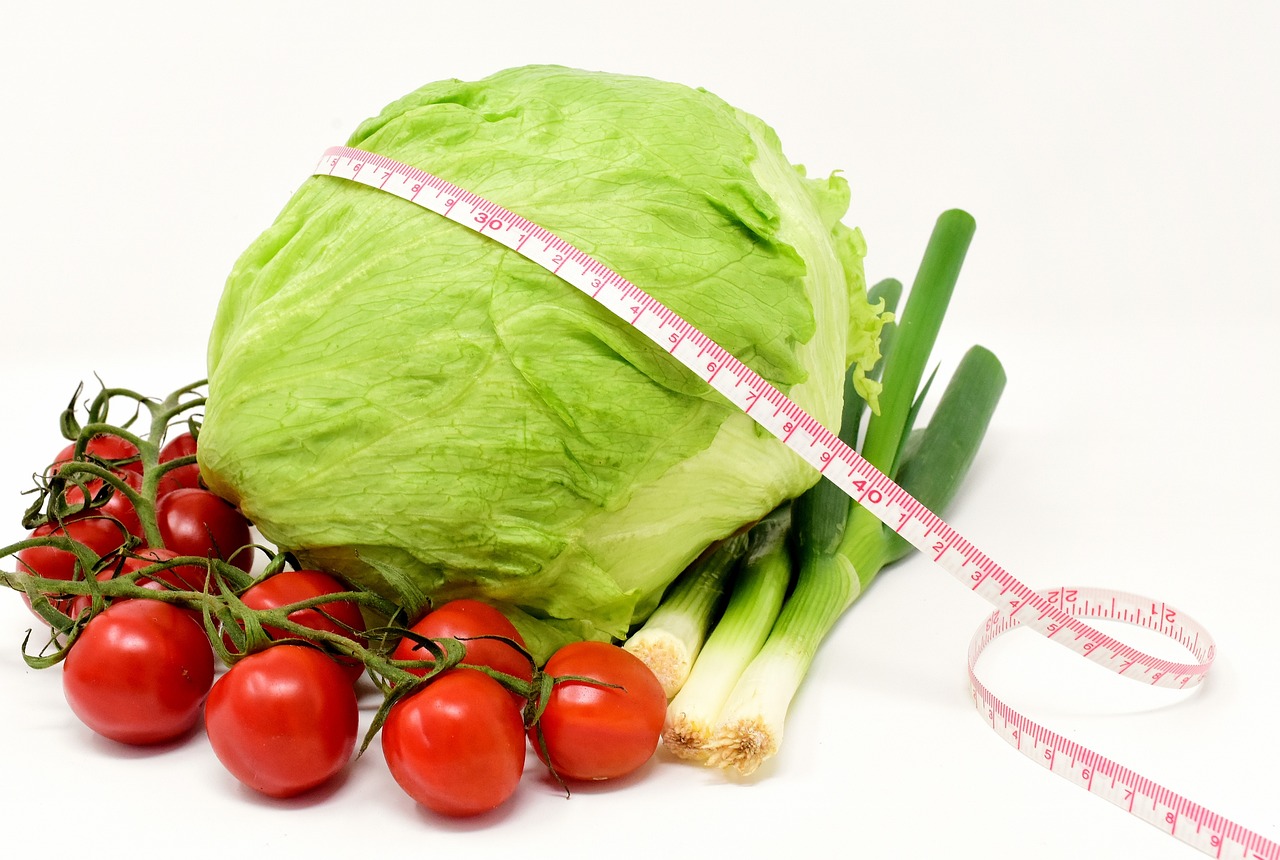
Monitoring Weight Changes
Regularly monitoring your pet's weight is not just a good idea; it's an essential part of responsible pet ownership. Just like us, pets can experience fluctuations in weight that may indicate underlying health issues. Keeping an eye on these changes can help you catch potential problems early and maintain your furry friend's overall well-being. But how do you effectively track your pet's weight? Let's dive into some practical tips and techniques that will make this task easier and more effective.
First off, you should establish a routine for weighing your pet. Consistency is key! Weighing your pet at the same time of day, preferably after they've gone to the bathroom and before they eat, will yield the most accurate results. This way, you're minimizing variables that could skew the numbers. If you have a small dog or cat, you can use a regular bathroom scale. For larger pets, a pet-specific scale might be necessary. Just remember to weigh yourself first, and then weigh yourself holding your pet. Subtract your weight from the total to find out how much your pet weighs.
Another effective method for monitoring weight changes is to keep a weight log. This can be as simple as a notebook or a digital spreadsheet where you record your pet's weight over time. By tracking their weight weekly or bi-weekly, you can easily spot trends. If you notice a sudden gain or loss, it could be a sign that something is off. For instance, if your pet's weight has increased significantly over a short period, it might indicate overeating or a lack of exercise. Conversely, if they are losing weight without any changes in diet or activity, it could signal health concerns that require veterinary attention.
To further enhance your monitoring efforts, consider using a weight chart. A weight chart can visually represent your pet's weight over time, making it easier to see fluctuations at a glance. You can create a simple chart with the following columns: Date, Weight, and Notes. This will allow you to jot down any observations, such as changes in appetite, behavior, or activity level that might correlate with their weight changes. Here's a simple example of what your chart might look like:
| Date | Weight (lbs) | Notes |
|---|---|---|
| 01/01/2023 | 15 | Normal appetite |
| 01/15/2023 | 16 | Increased activity |
| 02/01/2023 | 14 | Less active, check for health issues |
In addition to weighing your pet, pay attention to their body condition. This involves assessing their physical appearance and feeling their body to determine if they are at a healthy weight. A good way to do this is through Body Condition Scoring (BCS), which rates pets on a scale from 1 to 9, with 1 being extremely underweight and 9 being extremely overweight. A score of 4 to 5 is generally considered ideal. You can learn more about BCS through your veterinarian or reputable pet care resources.
Lastly, remember that changes in weight can be influenced by various factors, including age, breed, and lifestyle. Some pets may naturally gain weight as they age, while others may require more calories if they are particularly active. It's crucial to consider these factors when monitoring your pet's weight and to adjust their diet and exercise routine accordingly.
- How often should I weigh my pet? Ideally, you should weigh your pet at least once a month, but weekly checks can provide more insight into any changes.
- What should I do if my pet is overweight? Consult your veterinarian for a tailored diet and exercise plan to help your pet shed excess weight safely.
- Can I use a human scale to weigh my pet? Yes, but make sure to weigh yourself first and then weigh yourself holding your pet to get an accurate measurement.
Weighing Your Pet at Home
Weighing your pet at home can be a straightforward yet vital part of maintaining their health. Regular weight checks allow you to monitor any changes that could indicate underlying health issues. But how do you go about it? Well, let’s break it down into simple steps.
First off, you’ll need a reliable scale. If you have a small dog or cat, a standard bathroom scale may suffice. However, for larger breeds, you might want to invest in a pet-specific scale designed to handle their weight. You can also use a kitchen scale for smaller pets, but make sure it can accurately measure their weight. The key here is accuracy; an unreliable scale could lead you to misjudge your pet's health.
To get an accurate reading, you’ll want to follow a few steps:
- Choose a consistent time: Weigh your pet at the same time of day, preferably in the morning before they eat or drink. This helps eliminate variations caused by food or water intake.
- Prepare your pet: Make sure your pet is calm and comfortable. If they’re squirming or anxious, it could affect the reading.
- Weighing process: For smaller pets, you can hold them while standing on the scale and then subtract your weight from the total. For larger pets, simply have them stand on the scale directly.
Another effective method, especially for larger dogs, is to weigh yourself first, then weigh yourself holding your pet, and subtract your weight from the total. This method is often more accurate for those furry friends who might not be as cooperative when it comes to standing still on a scale.
Once you have your pet's weight, it’s crucial to keep a record. Create a simple chart or table that tracks their weight over time. You can use a notebook, a spreadsheet, or even a dedicated app. This way, you’ll have a clear view of any fluctuations, which can be essential for spotting trends that may need attention.
| Date | Weight (lbs) | Notes |
|---|---|---|
| 01/01/2023 | 10 | Healthy weight |
| 02/01/2023 | 11 | Gained 1 lb |
| 03/01/2023 | 10.5 | Back to normal |
By keeping track of your pet’s weight, you can notice any significant changes. If you observe a sudden increase or decrease, it’s essential to consult your veterinarian. Changes in weight can sometimes indicate health issues that require professional evaluation.
In conclusion, weighing your pet at home is not just about keeping numbers; it’s about ensuring your furry friend remains healthy and happy. Regular monitoring can lead to early detection of potential health problems, allowing you to take proactive measures. So, grab that scale, and start tracking your pet’s weight today!
- How often should I weigh my pet? It's generally recommended to weigh your pet every month, but if they are on a weight-loss program or have health issues, you may need to do it more frequently.
- What if my pet won't stay still on the scale? Try using treats to encourage them to stand still, or consider weighing them while they're in a carrier or your arms for smaller animals.
- Can I use a regular scale for my pet? Yes, as long as it can accurately measure their weight. For larger pets, a pet-specific scale might be more suitable.
When to Consult a Veterinarian
Monitoring your pet's weight is crucial, but there are times when you should not hesitate to reach out to a veterinarian. Just like we humans have our health check-ups, our furry friends need their moments of medical attention too. If you notice any significant changes in your pet's weight—whether it's a sudden gain or loss—it’s essential to act swiftly. A change in weight can be a red flag for underlying health issues, and you wouldn’t want to ignore those!
So, what are some specific signs that indicate it’s time to consult your vet? First, keep an eye on your pet’s eating habits. If your usually enthusiastic eater suddenly turns into a picky diner, or if they start drinking excessive amounts of water, these could be warning signs. Similarly, if your pet seems lethargic or less active than usual, it might be time to schedule that vet visit. Remember, our pets can’t voice their discomfort or pain, so we have to be their advocates.
Another critical factor to consider is the body condition score (BCS). If you’ve assessed your pet using the BCS and they fall into the underweight or overweight categories, consulting a veterinarian can help you understand the best course of action. They can provide tailored advice on diet adjustments or exercise plans that align with your pet's specific needs. Don’t forget that age plays a significant role as well; older pets may require more frequent check-ups to ensure they maintain a healthy weight.
Here’s a quick overview of signs that suggest it’s time to consult a veterinarian:
- Sudden weight changes: A loss or gain of more than 10% of your pet's body weight.
- Changes in appetite: Eating significantly less or more than usual.
- Behavioral changes: Increased lethargy or changes in activity levels.
- Digestive issues: Vomiting, diarrhea, or constipation that persists.
- Visible signs: Rib cage or spine visibility, excessive fat deposits, or muscle loss.
Additionally, regular veterinary check-ups can help preemptively address any potential weight-related issues. Your vet can guide you on how to maintain a healthy weight and provide insights into your pet's specific dietary needs. After all, a healthy pet is a happy pet! So, don’t hesitate to pick up the phone if you have any concerns. It’s always better to be safe than sorry when it comes to your beloved companion’s health.
Q: How often should I weigh my pet?
A: It's generally recommended to weigh your pet at least once a month, but if you notice any changes in their diet or activity levels, you may want to weigh them more frequently.
Q: What should I do if my pet is overweight?
A: Start by consulting your veterinarian for a proper weight management plan. This may include dietary changes, increased exercise, and regular monitoring.
Q: Can I use a human scale to weigh my pet?
A: Yes, you can use a human scale. Weigh yourself first, then weigh yourself holding your pet, and subtract the two weights to find your pet's weight.
Q: Are there specific diets for pets that need to lose weight?
A: Yes, there are specialized weight management diets available. Consult your veterinarian for recommendations tailored to your pet’s needs.
Q: What are the risks of not managing my pet's weight?
A: Overweight pets are at a higher risk for various health issues, including diabetes, heart disease, and joint problems. Maintaining a healthy weight is crucial for their overall well-being.
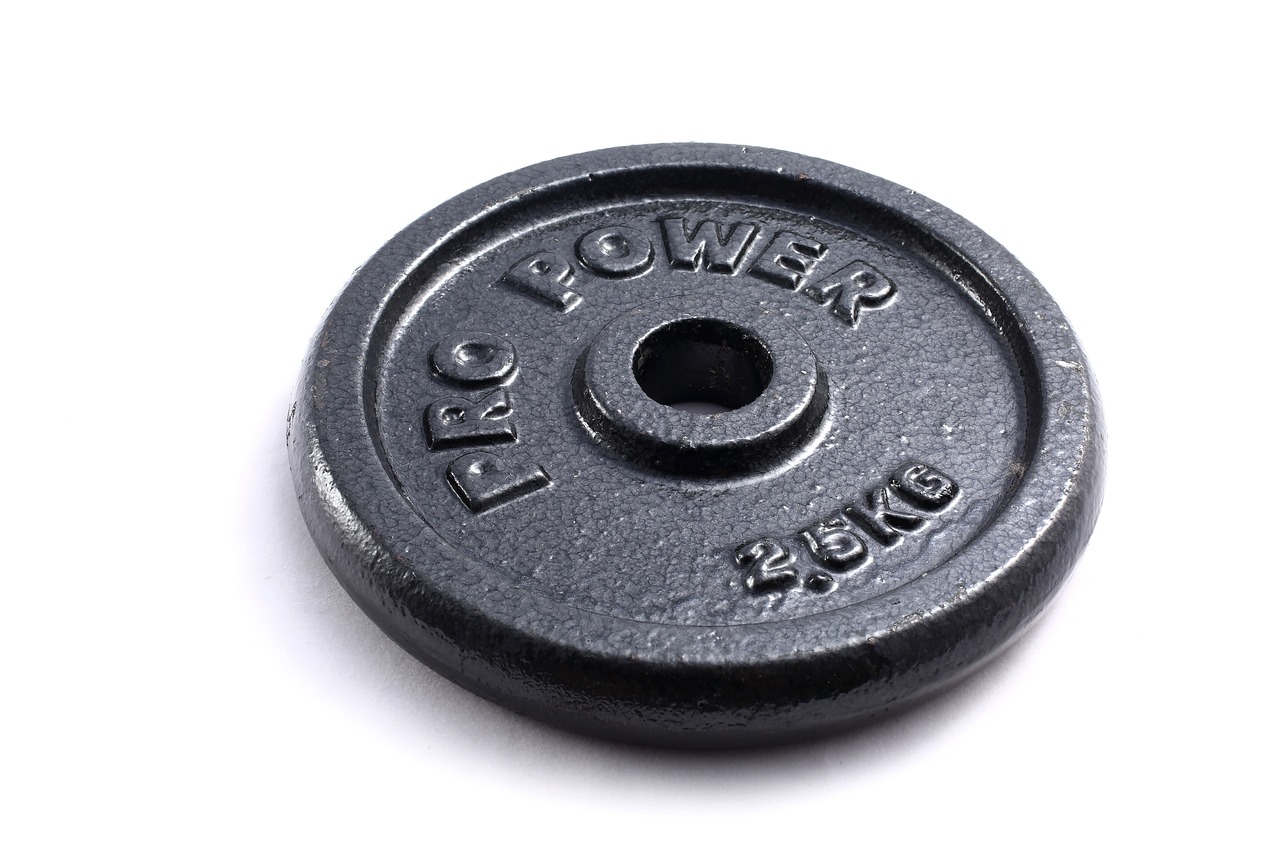
Adjusting Diet as Needed
When it comes to your furry friend's health, adjusting their diet is not just a good idea; it's essential! Just like humans, pets can experience changes in their weight due to various factors, including age, activity level, and even health conditions. Recognizing when and how to modify their diet can make a world of difference in maintaining their optimal weight and overall well-being. So, how do you go about this? Let's dive into the nitty-gritty!
First and foremost, it's important to understand that not all pets are the same. Each pet has unique nutritional requirements based on their breed, age, and lifestyle. For instance, a playful puppy will have different dietary needs compared to a senior dog snoozing on the couch. Thus, regularly evaluating your pet's dietary needs is crucial. If you notice changes in their energy levels, coat condition, or even their bathroom habits, it could be time to reassess their food.
One effective way to adjust your pet's diet is by incorporating a gradual transition to new food. Abrupt changes can upset their stomach, leading to discomfort and unwanted messes. Instead, mix the new food with their current diet over a period of 7 to 10 days. Start with a ratio of 25% new food and 75% old food, and gradually increase the new food while decreasing the old. This method not only eases the transition but also allows you to monitor how your pet reacts to the new diet.
Moreover, consider the caloric intake. Just like you might count calories to maintain or lose weight, your pet's caloric intake matters too! Use a caloric calculator or consult with your veterinarian to determine how many calories your pet should consume daily based on their weight and activity level. Keep in mind that treats also count towards their daily caloric intake. It's easy to go overboard with treats, so be mindful of how many you're giving!
In some cases, your pet may require a special diet due to health concerns. For example, pets with allergies, diabetes, or kidney issues often need tailored nutrition. If your veterinarian recommends a specific diet, it's crucial to follow their guidelines closely. They might suggest a prescription diet or specific ingredients to avoid. Remember, your vet is your best ally in ensuring your pet's health!
Lastly, don't forget to monitor your pet's weight regularly. Keeping track of their weight can help you identify if dietary adjustments are effective. If your pet is losing or gaining weight unexpectedly, it might be time to revisit their diet plan. A simple weight chart can be a handy tool for this purpose. Here's a quick example:
| Date | Weight (lbs) | Notes |
|---|---|---|
| 01/01/2023 | 25 | Beginning of diet |
| 02/01/2023 | 24 | Weight loss progress |
| 03/01/2023 | 23 | Stable weight |
In conclusion, adjusting your pet's diet is a dynamic process that requires attention and care. By understanding their unique needs, transitioning foods gradually, monitoring caloric intake, and keeping a close eye on their weight, you can ensure that your beloved pet remains happy and healthy. Remember, a well-fed pet is a happy pet!
- How often should I weigh my pet? It's recommended to weigh your pet at least once a month, but more frequent checks may be necessary if you're making significant dietary changes.
- Can I give my pet table scraps? While some human foods are safe for pets, many can be harmful. Always consult your veterinarian before introducing new foods into your pet's diet.
- What should I do if my pet refuses to eat the new food? If your pet shows reluctance to eat, try mixing the new food with their favorite treats or consult your vet for alternative options.
Frequently Asked Questions
- How can I tell if my pet is at a healthy weight?
Determining if your pet is at a healthy weight can be done through various methods. One effective way is to assess their body condition score (BCS), which evaluates fat distribution and overall body shape. You can also use visual assessment techniques, like looking for a waistline and feeling for ribs without excess fat covering. Additionally, consulting with your veterinarian can provide personalized insights based on your pet's breed and age.
- What should I look for on pet food labels?
Reading pet food labels is crucial for making informed dietary choices. Look for high-quality protein sources listed as the first ingredient, and ensure the food meets the nutritional standards set by the Association of American Feed Control Officials (AAFCO). Also, check for essential nutrients like vitamins, minerals, and fatty acids. Avoid foods with excessive fillers or artificial additives, as these can be detrimental to your pet's health.
- How often should I weigh my pet?
It's recommended to weigh your pet at least once a month to monitor any significant changes in weight. If your pet is on a weight loss or gain program, consider weighing them weekly. Regular monitoring helps in early detection of any potential health issues, allowing you to adjust their diet or consult a veterinarian as needed.
- What signs indicate that I should consult a veterinarian about my pet's weight?
If you notice sudden weight gain or loss, changes in appetite, lethargy, or difficulty in movement, it's time to consult a veterinarian. These could be signs of underlying health issues that require professional attention. Regular check-ups can also help catch any problems early on, ensuring your pet stays healthy and happy.
- Can I adjust my pet's diet on my own?
While you can make adjustments to your pet's diet, it's essential to do so carefully. Gradual changes are key to preventing digestive upset. If you're considering a significant diet change, such as switching to a weight management formula, consulting with your veterinarian is wise. They can provide tailored advice and ensure that your pet's nutritional needs are met.
- How can I create a feeding schedule for my pet?
Creating a feeding schedule involves setting specific times for meals and sticking to them. Aim for consistency, feeding your pet at the same times each day. This routine helps regulate their metabolism and can prevent overeating. Depending on your pet’s age and health, you may need to adjust the number of meals per day, so consult with your vet for the best plan.

